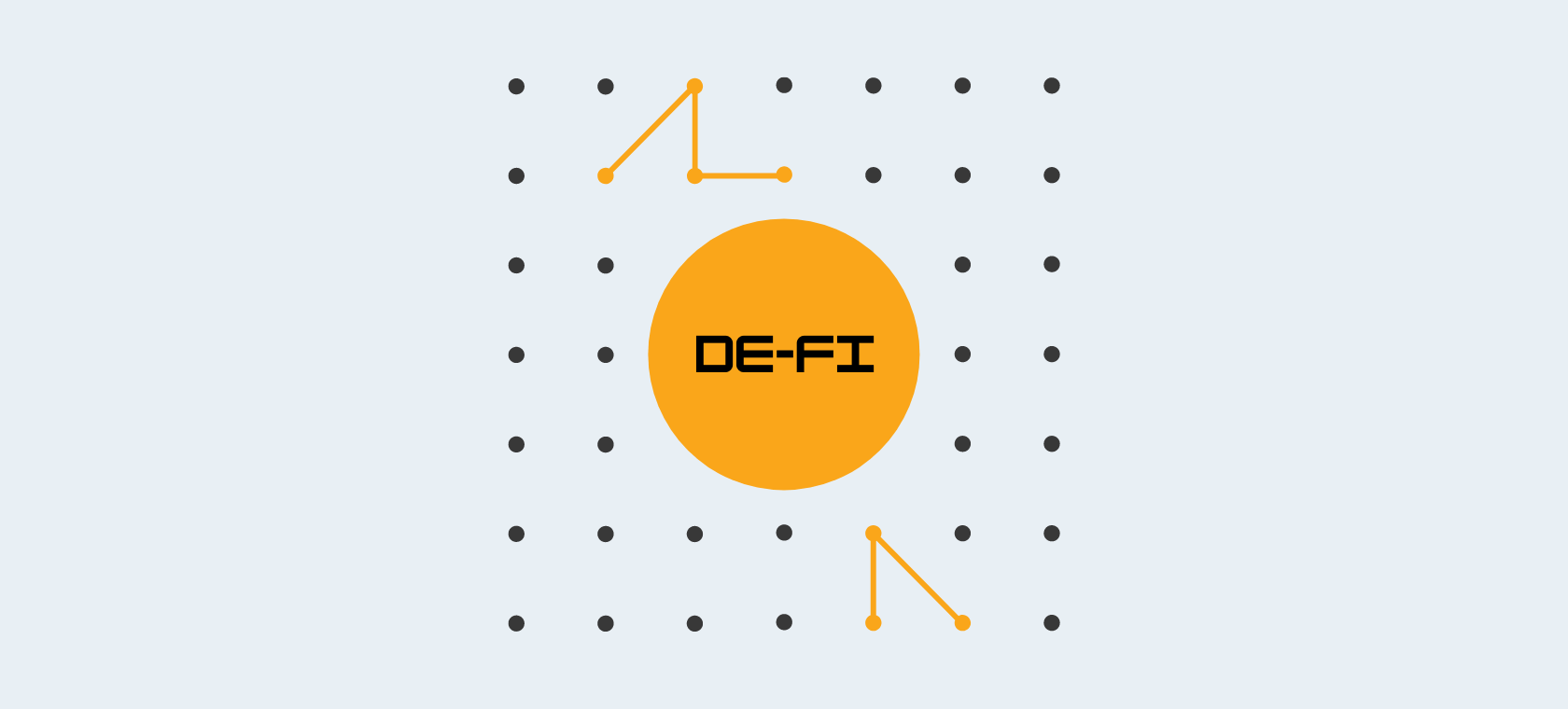What is DeFi? A guide through decentralised banking
Find out what is DeFi and how it helped the crypto world.
The value of many DeFi protocols is growing rapidly and is breaking many records. In the last few months, the Ethereum network was completely saturated with a large number of transactions an other operations.
Transaction fees are constantly growing. Even the "always high" price of Bitcoin transactions grow.
If you are sending ETH, the transaction will cost you 2 dollars (approx.). On the other hand, the conversion, or any other option with ERC-20 tokens will cost you more, depending on the time you're ready to spend waiting for the confirmation.
Why do users pay million dollars (daily) for transaction and operation fees on the Etherum network? The answer is DeFi.
What is DeFi?
Basically, Decentralized Finance (DeFi) is striving to provide the benefits of traditional banking services on blockchain.
Digitalisation of financial services opens many innovative options, which we will elaborate below.
The key advantages of DeFi services are:
- Protocol openness - everyone can use the financial services, regardless of their age, sex, origin or credit rating.
- Complete control - every user has complete control and ownership over his/her money.
- Compatibility - simple alteration between service providers - working with several mutually compatible networks and services.
- Availability - all services are available 24h/day.
The application of DeFi
Whether you are buying clothes, home appliances, etc., the automatic reaction is to pay with your credit card. If you want to get a mortgage for a new house or apartment, first you'll need a bank's approval.
The issuance of new credit cards or mortgages are based on the bank analysis of your financial profile.
Decentralised loans work in a different way. They are mostly useful when you own a certain currency, and you want to add another one.
the most common example is when you own Bitcoin or Ethereum, but you want fiat currency to buy something, or you want another cryptocurrency.
Today, you can deposit ETH platform and exchange it for another cryptocurrency. During that process you would have to have enough "collaterals", so the ETH you have put as a deposit doesn't get liquidated in case of a price drop.
Recently, the founders of Aave protocol introduced a new innovation - instant loans. The concept is probably most easily applicable with trading. With instant loans it is possible to get a loan only under the condition that you return it within the same blockchain transaction.
The mentioned procedure is very easily applicable with arbitration. You can see an example on the picture below.
Probably the most popular DeFi instrument are stablecoins. Stablecoin value always follows the value of fiat currency - US dollar. The most popular decentralised stablecoin is DAI, which maintains value due to the coverage in ETH coins.
Uniswap madness
Ethereum network is currently not able to support real decentralised stock markets. That is why simplified stock markets entered the scene. Automatic market markers (AMM’s) are very simple to use as they use simpler operation solutions. They are based on liquidity pools which are located within the smart contract.
When exchanging one token for another, the stock market ensures that the product of both pools remains on a constant value. In practice, the only thing you must take care of is the price which you will get when buying or selling a certain token, and it depends on the pool liquidity.
The most popular AMM stock market with the greatest liquidity is Uniswap. If you want to try Uniswap features, first, you will need Ethereum (ETH). You can also buy ETH here. Recently other AMM stock markets have emerged, which have more complex mechanisms of price formation, but they are still not able to compete with Uniswap.
Farmers - modern miners?
All previously mentioned services require liquidity in order to run smoothly. In order to change ETH for some other ERC-20 token on Uniswap, and the other way around, someone has to fill up the pools with enough liquidity.
This is where farmers come to play. As a reward for risk-taking and providing liquidity, a certain percentage from trading fees is acquired or governance tokens are shared.
For instance, for providing liquidity through Compound protocols, you will acquire a compensation in the form of COMP tokens. "Farmers" are basically liquidity providers, while shifting liquidity with the purpose of optimisation and farming the biggest yield possible is called "crop rotation".
Management structure
DeFi protocols are managed by investors through governance tokens, which are irresistibly reminiscent of stock shares with certain advantages. As the owner of a share in a certain company, you have the right to vote when the management is selected, which is then managing the company.
On the other hand, management tokens such as COMP and LEND give you a far greater control and authorities. If you have the majority share of tokens, you can literally vote the change of the smart agreement and change the rules of the protocol.
In theory, management tokens should be spread sufficiently so that there is no person or group of people who have the majority share in protocol control.
Risk
Using DeFi protocols also holds certain risks. Many smart contracts may have some design flaws, which can be misused by hackers.
As in many industries there can also be many founders with bad intentions. They usually start a project, hype it enough to make a quick buck and then just vanish.
That is why you should do your own due diligence and use only trusted projects with proven results and good reputation.
When investing in the upcoming DeFi projects, you must be ready for extreme volatility and adequately adapt the position in order to keep the risk on a level that is acceptable to you.
